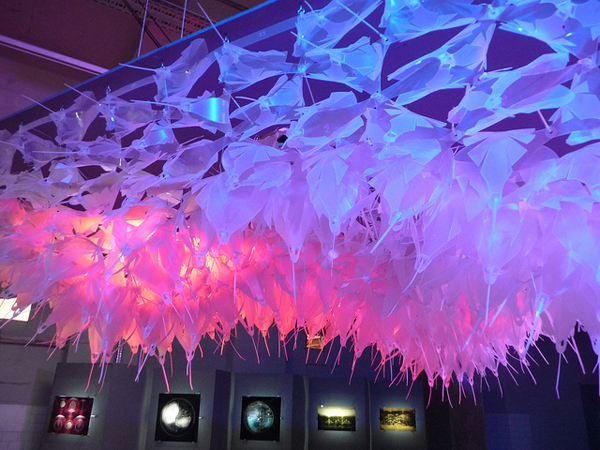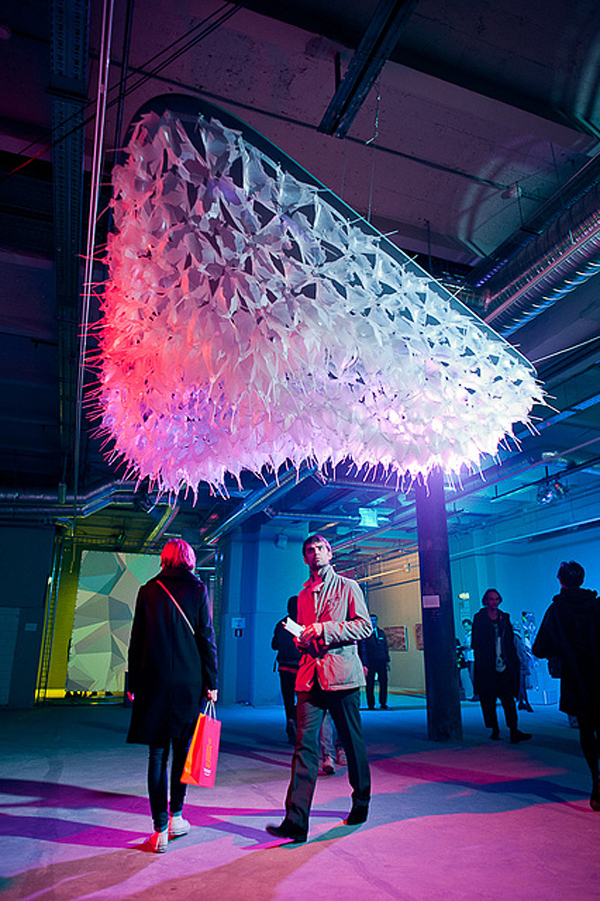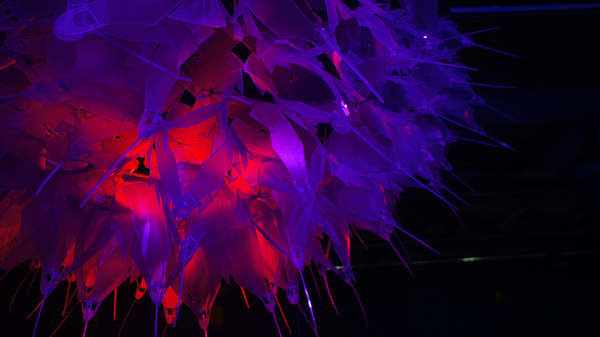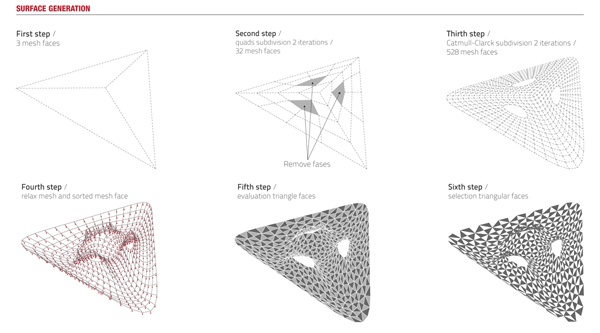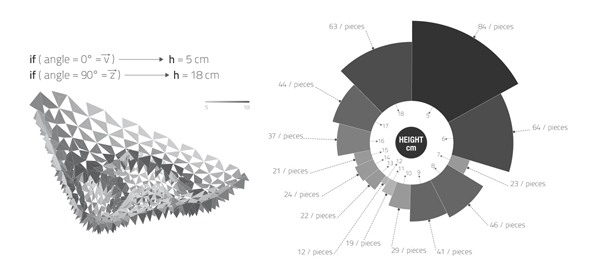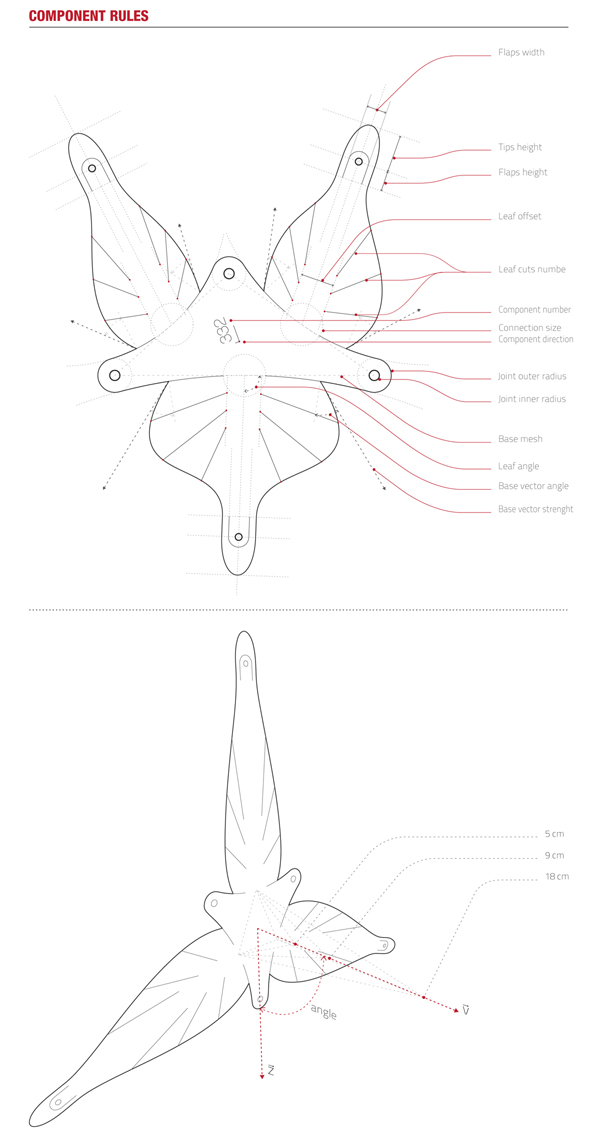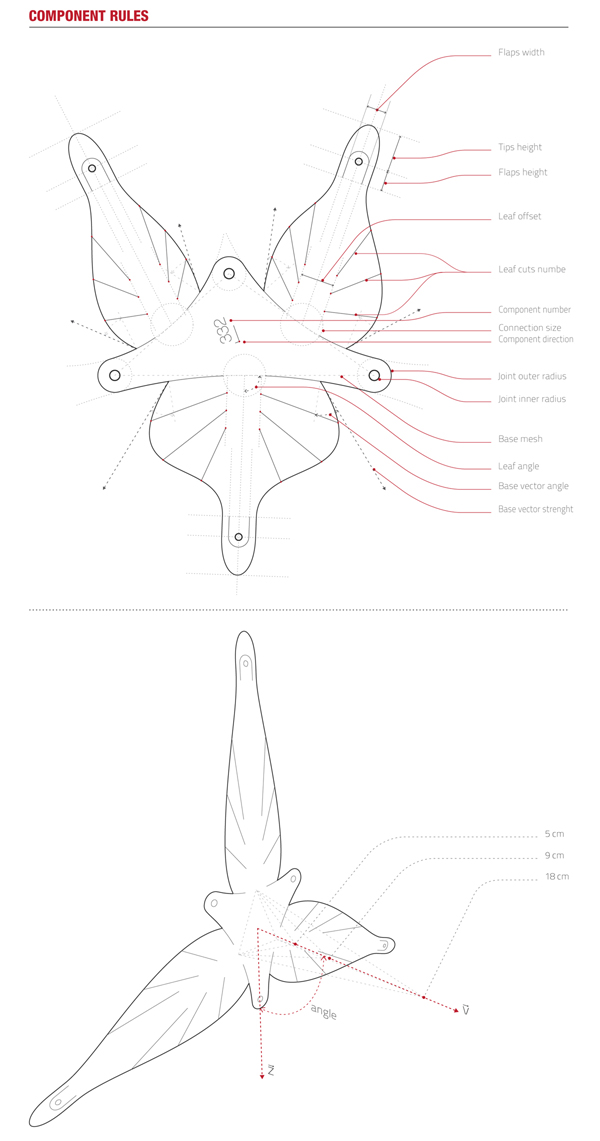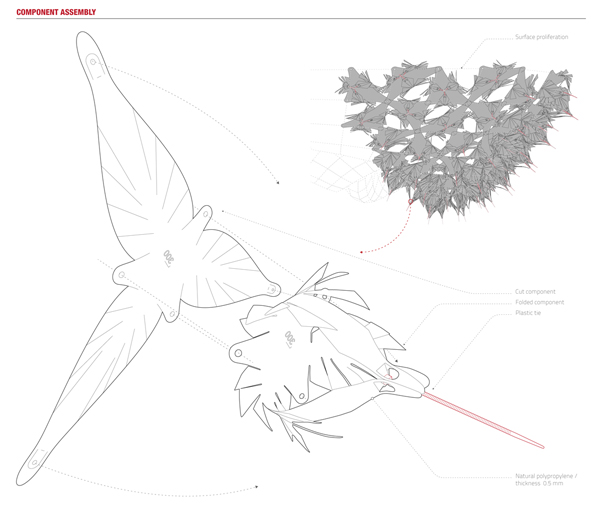The project deals with the occularcentric nature of contemporary culture, by manipulating and unmasking its deceptive mechanisms. The design process starts with the fact that our ability to perceive the details is limited to the narrow fovea (the only part of the retina that permits 100% visual acuity) in the eye’s retina. Vision is then a matter of unconscious inferences: making assumptions and conclusions from incomplete data, based on previous experiences.
This inference and the inability to perceive the details trigger an attractive process, but the complexity of the component detail can be appreciated only at a scale where the perception of the whole is lost; rolling backwards, it becomes clear that the effect of the whole is more than just the sum of the constituent parts. It is an experiment (or proof of concept) on how morphology, organization, material systems and patterns have the ability to trigger dynamic behavioral effects and interaction in space and time.
From a technical standpoint, the structure was generated by triangulating the mesh and choosing triangles in an alternate pattern: this strategy maintains structural integrity (all remaining triangles are connected) while using half of the surface area. In order to increase complexity and enrich the range of effects, components have a gradient variation in height according to their horizontal condition: the more they approach the horizontal condition, the higher and more developed they become. Each component, realized through laser cut from polypropylene flat sheets, has 3 radial “petals” with variable number of cuts and curve tangency according to the individual morphology and the height gradient, embedding the necessary cuts for assembly. All components are assembled using plastic ties.

